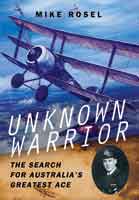The concept of aeroplanes being used in a war as early as World War One has always fascinated me. Although, this interest did not quite deliver me to the brink of both insanity nor the financial ruin that one Howard Hughes famously reached attempting to portray the biplanes of the Great War in his over the top epic Hell’s Angels; nonetheless, the fact that aeroplanes were being sent into battle so young into their conception is an idea that has survived the test of time.
It could be said that amongst the Flying Aces, the Red Baron and the fast developing technology, the fact that these battles came just eleven years after the Wright Brothers completed the world’s first powered flight is one that is greatly overlooked. As an archaeologist, you soon come to terms with the idea that if an advancement in technology is made, the chances are it would soon be utilised to bash your enemy on the head. Aviation’s journey from man’s first civilized conquering of the skies to specified killing machine in just over a decade however, is both astonishing and reflective of the human race’s tendency to repeat the past and aim for the jugular.
I was delighted then, to have Unknown Warrior land on my desk for review. On first impression the book would appear to be for a very specific audience, a reader that perhaps already knows much about the air forces of the Great War and wishes to hone in on a specific Flying Ace. This couldn’t be further from the case, as Mike Rosel excellently combines a broad overview of air combat with the personal and often touchingstory of Robert A. Little, or Alec to his mates.
Little’s story is an extraordinary one. Failing to qualify for the Australian Army’s Flying School, he chose to sail to England and earn his pilots license off his own back. While the school cost him the equivalent of $10,000 in today’s money, the cash was likely less of an issue to a former Old Boy of Scotch College than the journey, and Little’s determination to travel across the world to fight for the Empire was admirable. The author has clearly spent a long time buried in the archives and Unknown Warrior benefits from this hugely, as the book perfectly combines narrative with factual records and guides the reader through Little’s entire flying career.
From the moving insights into Little’s personality; picking wildflowers in his downtime and painting his son’s name in two foot letters on his SopwithTriplane’s fuselage, to his daring escapades single-handedly taking on eleven enemy aircraft, these events often come with a beautiful quip that feeds into the romantic classiness of a war a hundred years in the past. It’s hard to not picture the chivalrous German chuckling as he jokes It looks as if I have brought you down, not you me, doesn’t it?after Little aviation history flipped his plane in a ditch, following his victim down to take as a personal prisoner. Without fail, each flight recorded by Little is included in Unknown Warrior alongside the pilot’s own comments, giving an amazing fly on the wall look at the modesty and stiff upper lip not only typical of war time aces, but a reflection of the era as a whole. Shaw did not return. Last seen over Le Sars… going West.Little writes on January 23rd. Going West, a tragic and poignant term to announce the death of his friend and one commonly used on the battlefield.
Little, by all accounts, was not the best pilot on the Western Front. He was said to have joked about destroying as many allied planes upon landing as he did enemy ones. But his bravery, determination and fierce appetite for victory earned him global adulation and the eventual title of Australia’s most decorated Flying Ace, before disappearing into history as so many famous names of the war did in a post-war society desperate to move on. The author has done a fantastic job bringing Little’s memory back to life through this book, and in so doing has created a reminder of just how brave these men were. So many accounts found in Unknown Warrior end in crashlandings from fuel leaks, engines failing, frozen equipment or pieces of plane simply falling off. These were machines in their infancy and thousands of men were prepared to climb aboard, load a machine gun, fly over enemy lines and pray for the best.
Little was shot down on 27th May 1918. Shot through the legs by a single bullet. Quite fittingly sharing arguably the same fate as the infamous Red Baron. Little was 22 years old when he died. I am the same age as I write this. I find it difficult to imagine myself climbing into a Sopwith Pup in 2014, let alone 1914, but still he died with forty-seven victories under his belt. Not just Australia’s most successful Flying Ace of all wars, but the eighth most successful in the British Commonwealth. Few matched his kills, and while aged by war, his sensitivity to life was never quashed: a few years ago at a waste sorting station in Queensland, a box of his possessions was turned in and saved. His goggle case was opened to find a group of dried pansies, and from his helmet liner fell a gold sovereign wrapped in a picture of his baby son, carried with him throughout the entirety of his war, a secret kept for almost a century.
Whether you are interested in aviation history, the Great War in general or the personal plight of one man, Unknown Warrior is a delightful read and one highly recommended as a starting point or a detailed case study for any reader.
Reviewed by John Henry Phillips for War History Online
UNKNOWN WARRIOR – THE SEARCH FOR AUSTRALIA’S GREATEST ACE
By Mike Rosel
Pen & Sword Aviation
ISBN: 978 1 78346 394 7
